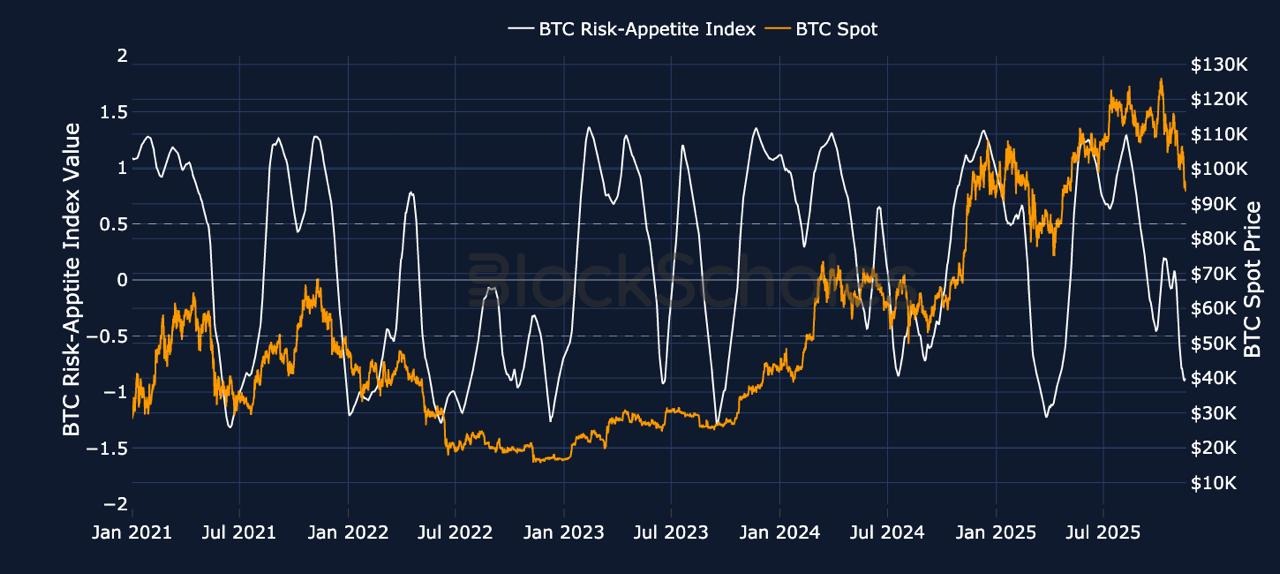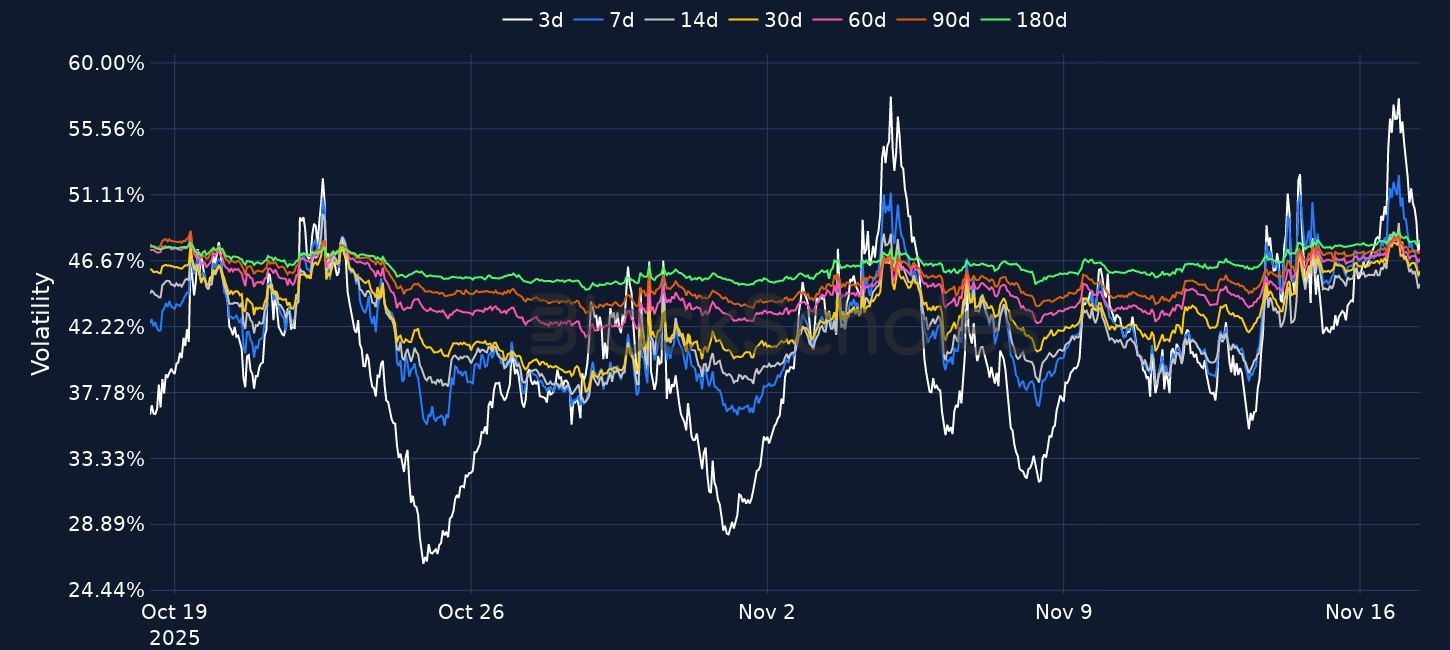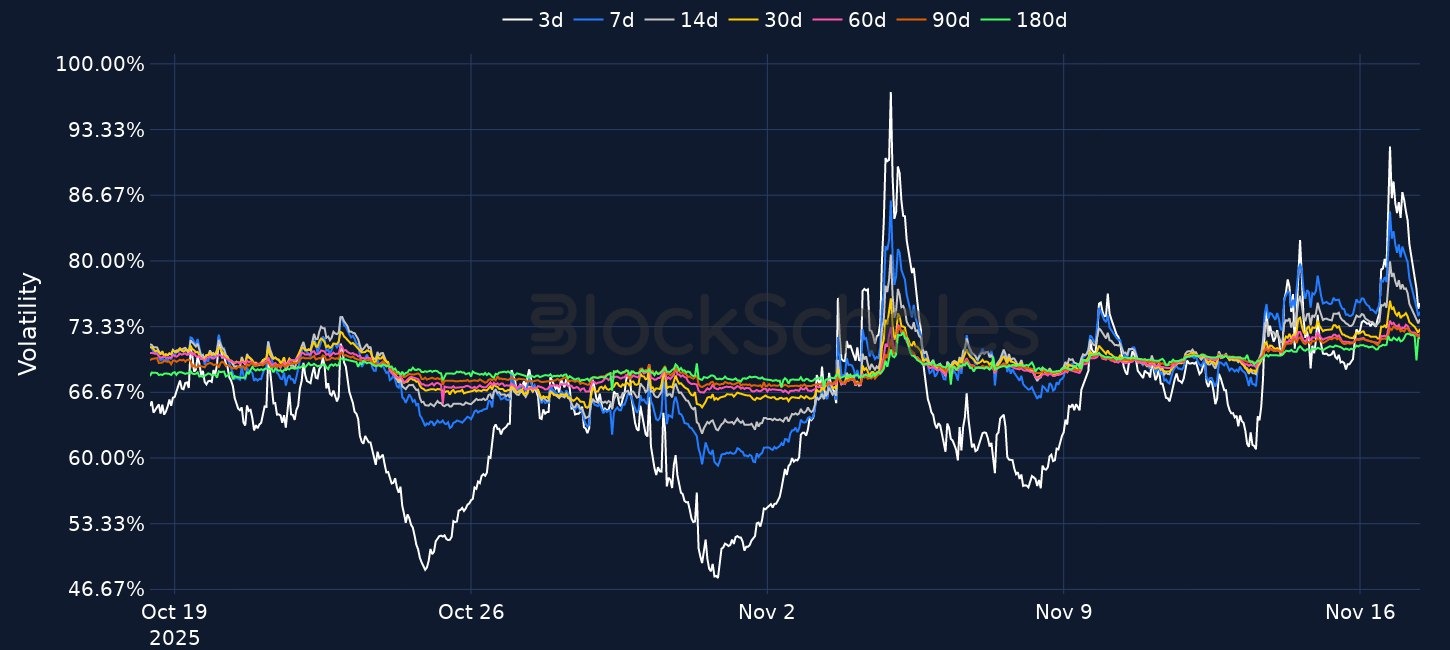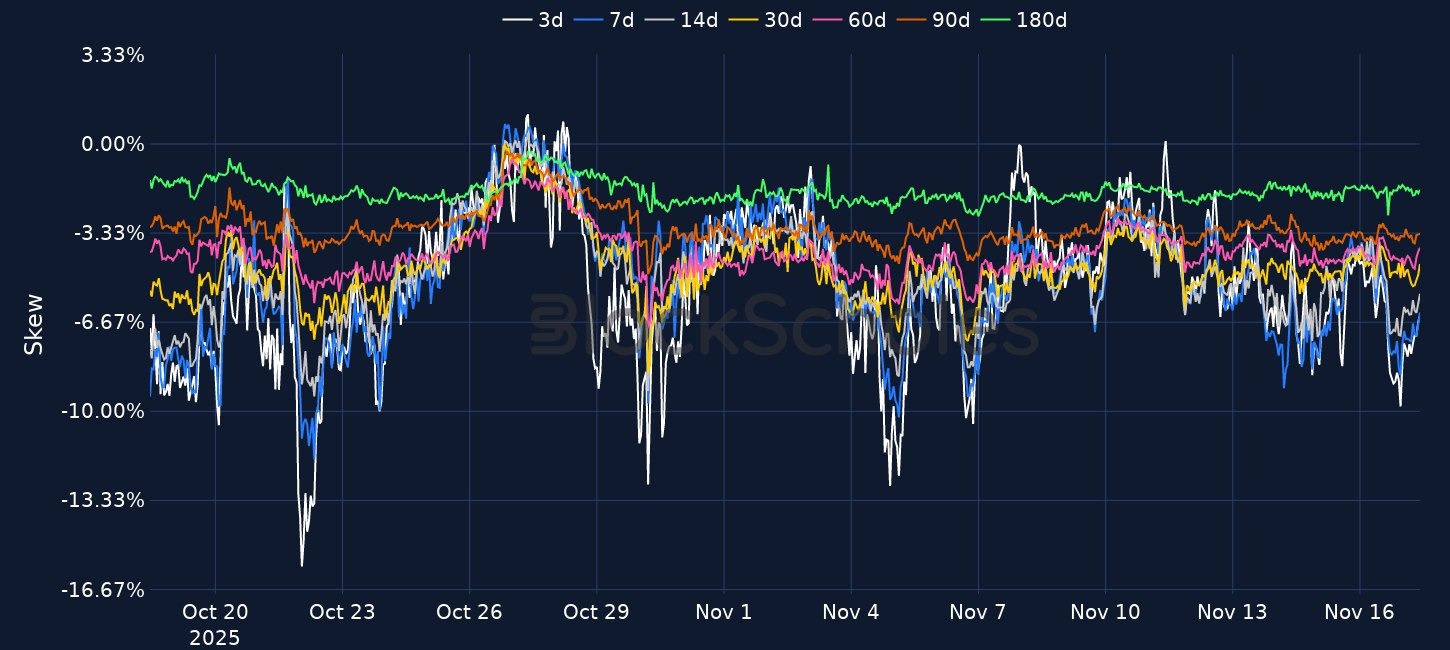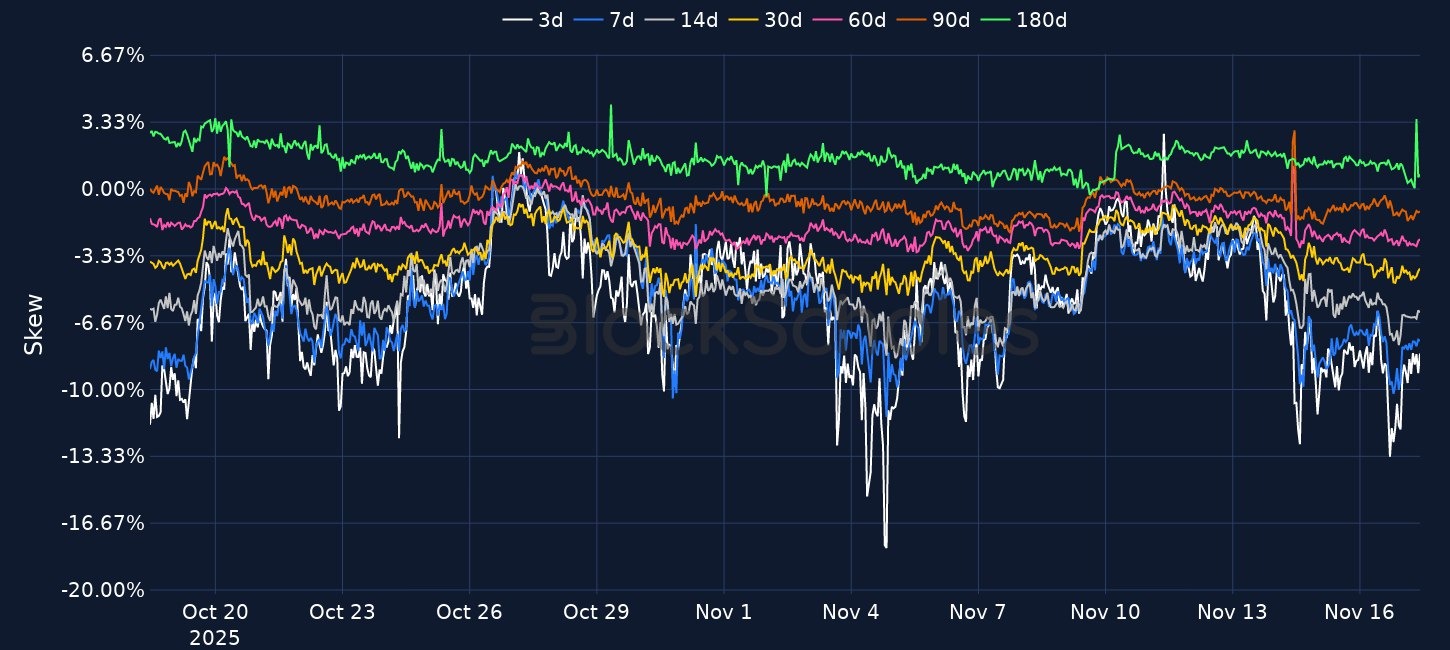Crypto Market Hits Lows
Crypto is leading the latest risk-off move, with BTC dropping to ~$93–95K (now negative YTD, back to May levels) and ETH to ~$3,000–3,200, while total crypto market cap is down >25% since the 10 October liquidation. Spot flows are reinforcing the selloff: BTC ETFs saw outflows of $866.7m on Thursday and $492.1m on Friday, and ETH ETFs lost $728.3m over the week across four consecutive outflow days. Options markets are positioned for further downside, with BTC ATM vols at 45–47%, short-dated ETH trading ~5 vol points rich to the back, and 25-delta skew at -7.8% for ETH and -7.2% for BTC, with open interest concentrated in BTC $90K and $85K puts versus $120K and $140K calls. Crypto-equity proxy Strategy is under pressure, with shares down 19% over five days and 31% over a month, and its mNAV briefly dipping below 1 as broader US risk sentiment deteriorates on tech/AI bubble concerns and a more hawkish Fed.

Find out our latest reports, listed below:
Market Snapshot: Overnight Moves
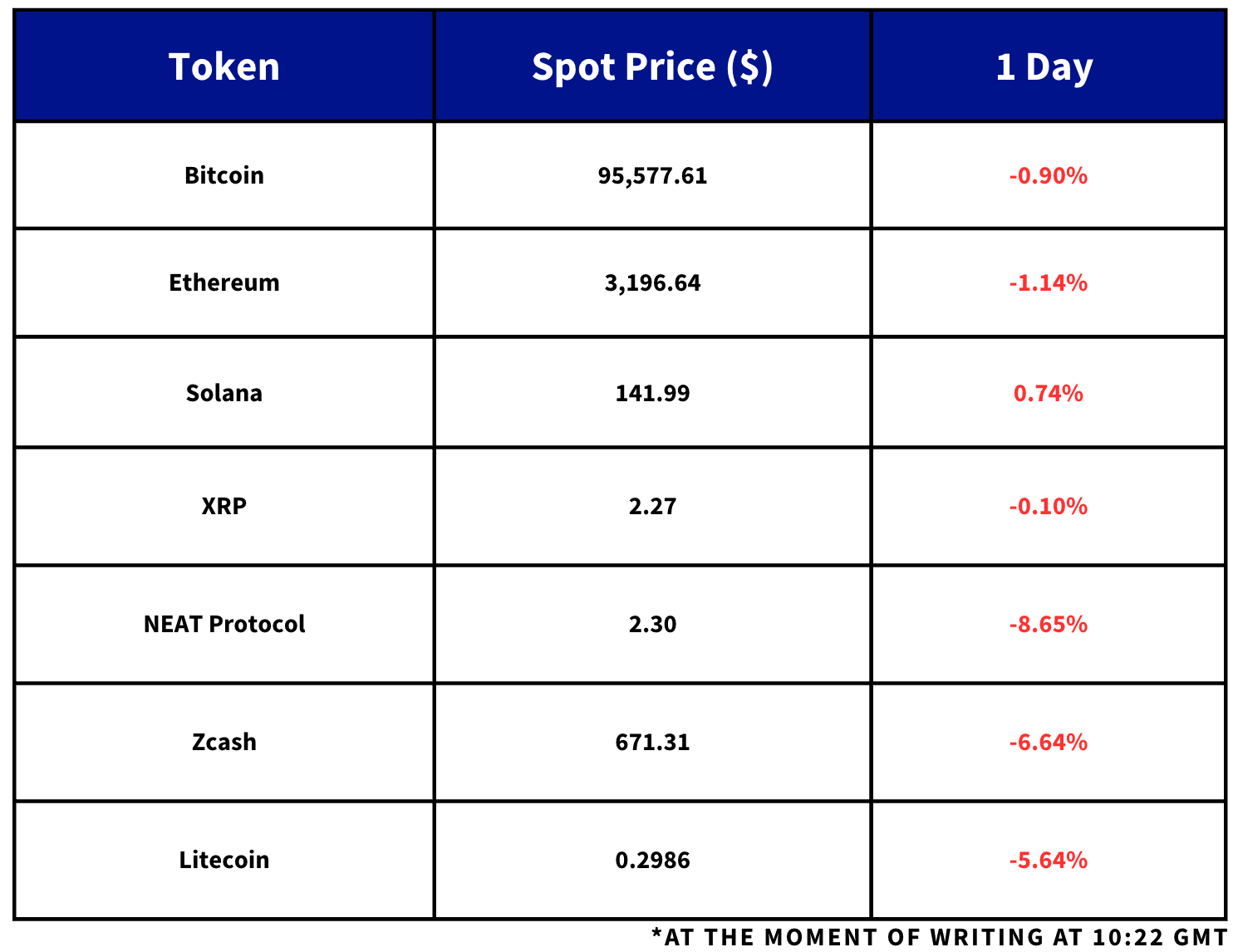
Daily Updates:
- The most recent bout of risk aversion across financial markets has seen crypto assets struggle the most. BTC is currently holding at $95K, a level it last traded at back in May 2025. Over the weekend it briefly fell to $93K, turning negative on the year. ETH has continued to underperform also – it dropped to $3,000 on Sunday, before modestly rebounding to $3,200, though remains nearly 40% below its record high.
- The total market cap of crypto has declined more than 25% since the October 10 liquidation selloff. That’s been reflected in both institutional demand for crypto tokens where cumulative outflows from Spot ETFs has added additional downward pressure on spot prices, as well as derivatives markets positioning.
- On Thursday, Spot BTC ETFs sold $866.7M of bitcoins, the second-largest single day outflow on record — that continued into Friday when the funds collectively sold $492.1M.
- The selling was not just concentrated in Bitcoin either. Spot Ethereum ETFs saw outflows of $728.3M over the past week, recording four consecutive outflow days.
- Unsurprisingly, the demand for protection against further downside moves continues to prevail in options markets. BTC’s volatility term structure remains flat with ATM vol levels between 45% and 47%, while short-tenor ETH options trade at 5 vol point premium to longer-dated options. That heightened expectation for volatility is accompanied by a 7.8% vol premium towards 25-delta put options over calls for ETH and 7.2% premium for BTC puts relative to calls.
- According to Deribit, put contracts with strikes at $90,000 and $85,000 are the largest by open interest, exceeding the OI in the most popular calls with strikes of $120K and $140K across all expirations.
- The market anxiety in crypto has had a material impact on shares of Strategy — the largest Bitcoin DAT. MSTR shares are down 19% over the past five days and 31% in the past month. Strategy’s mNAV — i.e., the company’s enterprise value relative to the value of its BTC holdings, even briefly fell below 1 last week, meaning a share value less than the BTC held on its balance sheet.
- US equities ended Friday flat after a more than 2% decline earlier in the week, as the US government shutdown provided only a brief spell of relief before concerns over tech-stocks and the AI bubble fueled a move away from speculation.
- Sentiment has also been particularly dampened by a growing crowd of inflation-hawks at the Fed. A number of FOMC policymakers have indicated an apparent willingness to take a pause in the December FOMC meeting, bringing the odds of a rate cut to 43.6% (and 56.4% for a pause).
- Kansas City Fed President Jeffery Schmid dissented against October’s rate cut decision. Following the meeting, he outlined in a statement explaining his dissent that “a cut could have longer-lasting effects on inflation if the Fed’s commitment to its 2 percent inflation objective comes into question”.
- During a speech on Friday, he reiterated that same point — “Now, for example, I do not think further cuts in interest rates will do much to patch over any cracks in the labor market … However, cuts could have longer-lasting effects on inflation”.
- He also mentioned that inflation appears to be more widespread than simply a tariff-driven phenomenon.
- Schmid said “it is not just tariffs—or even primarily tariffs—that has people worried. I hear concerns about rising health care costs and insurance premiums, and I hear a lot about electricity. Overall, the message is that inflation is too high. And I agree: Inflation is too high.”
- Additionally, non-voting member Raphael Bostic, president of the Atlanta Fed, said last Friday “I’ve been able to get behind the last two cuts, and we’ll see what happens for this next one” stating that “I want the information to guide where I think the appropriate policy should be.”
- Japanese Prime Minister Sanae Takaichi’s government is reportedly planning an economic stimulus package worth ¥17T ($110B), according to local media reports over the weekend. The spending package, which will exceed last year’s budget, underscores Takaichi’s approach to what she refers to as “responsible and expansionary finance”.
- The move follows a contraction in Japan’s economy — the first contraction in six quarters, as real GDP fell 1.8% on an annualised basis in Q3.
- Earlier today, however, longer-maturity Japanese sovereign bonds fell sharply amidst the fiscal concerns stemming from the spending package.
- Japan’s 20-year bond yield jumped to its highest level since 1999, while the yield on the 30-year bond jumped 5bps to 3.26%.
- Japan is preparing one of its most significant overhauls of digital asset policy to date, with regulators moving to reclassify more than 100 cryptocurrencies as financial products and introduce sweeping tax relief for investors.
- According to reporting, the Financial Services Agency has finalised a framework that would bring 105 crypto assets, including BTC and ETH, under the Financial Instruments and Exchange Act.
- These measures are expected to be submitted to the ordinary Diet session in 2026 as part of a broader update to Japan’s financial legislation.
- A key component of the initiative is tax reform. As crypto assets begin to be treated more like traditional securities, the government is seeking to cut the current maximum tax rate on crypto gains, which can reach 55%, to a flat 20%. The proposal is set to be reviewed in the next fiscal year.
- Hong Kong has moved Project Ensemble into a live pilot phase, enabling real-value transactions using tokenized deposits for the first time.
- Running through 2026, the pilot will begin with tokenized money-market fund transactions and real-time liquidity management. Early settlement will run through the HKD RTGS system, with plans to upgrade to 24/7 settlement in tokenized central bank money.
- Ethereum treasury company, BitMine Immersion Technologies Inc (NYSE American: BMNR), which currently holds over 2.9% of all Ethereum, announced a major leadership shift with Chi Tsang replacing Jonathan Bates as CEO and is also adding three new independent directors.
This Week’s Calendar:


Charts of the Day:
